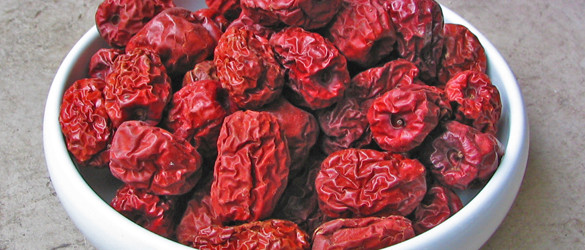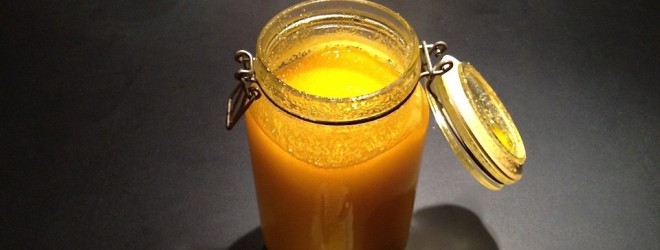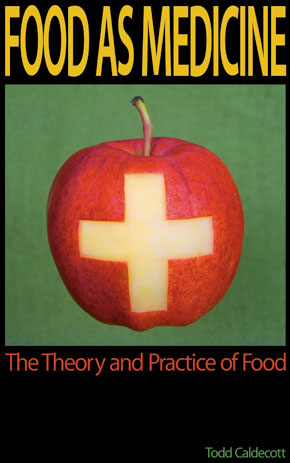All systems of traditional medicine make extensive use of the medicinal properties of both fresh and dried fruit, cooked with water to make a compote, or prepared as medicinal jams and syrups. Ayurveda maintains a large class of medicinal jams called lehyas, which means ‘to lick’, referring to the method of administration. While they aren’t exactly like deserts, compotes, jams and syrups are a very pleasant to get the medicine down, and are particularly suited to both vata and pitta conditions. The following ‘Blood Building Syrup’ is an excellent preparation to help build up the blood in anemia, infertility, exhaustion, and immunodeficiency, or when recovering from chronic disease, medical treatments (e.g. chemotherapy) or surgery. Although it is prepared as a syrup in this recipe, to prepare as a compote simply stew the fruit with the herbs and serve it without processing it further.
Ingredients
½ cup chopped dried figs
½ cup dried goji berries
½ cup dried prunes
½ cup Chinese red dates
1 oz shatavari root (tien men dong or asparagus root)
1 oz cured rehmannia (shu di huang)
1 oz astragalus root (huang qi)
1 oz American ginseng (xi yang shen)
2 quarts (4 liters) water
2-3 tbsp ghee
2 tbsp pippali powder
1 tsp cardamom powder
1 tsp cinnamon powder
½ tsp clove powder
¼ tsp pink salt
1 cup organic molasses (approximately)
Directions
Add the dried fruit and herbs (shatavari, rehmannia, astragalus, American ginseng) into a pot along with 2 quarts of water, bring to a boil and simmer until it is reduced to a syrup-like consistency and the fruit and herbs are squishy (about 1 hour). Allow the fruit-herb decoction to cool and then mix in a blender until smooth. Strain the liquid through a mesh strainer into a measuring cup, taking note of exactly how much liquid you are left with. In a separate pan, melt the ghee on medium heat and add the pippali, cardamom, cinnamon, clove and pink salt. Cook for a minute and then add the fruit-herb decoction to this, along with an equal part molasses. Cook on low heat for about 10-15 minutes, stirring frequently. Pour into a clean, dry glass bottle, seal and store in a cool location. Dose is 1-2 tbsp twice daily, with warm water.
***
Since this post was published a few years back, I have received a number of inquiries where these herbs can be obtained. First off, it’s not absolutely necessary you use exactly the same ingredients. All of the recipes in Food As Medicine are designed as a starting point, and are easily modified based on your needs. That said, this formula in particular has been very successful at resolving anemia, and if possible, measures should be taken to replicate it as closely as possible.
Locating the Chinese herbs is easy if your region or city has a local Chinatown. Here in Vancouver, we have lots of Chinese influence, and it’s easy to find Chinese herbs. My favorite location to send folks here is Kiu Shun Trading Company, down on Keefer Street in Vancouver. When I have international orders, however, for which shipping bulk herbs across the border isn’t so easy, I have a number of online recommendations:
For TCM herbs
Five Flavor Herbs
Kalyx
Springwind Dispensary
For Western herbs
Mountain Rose Herbs
Starwest Botanicals
For Ayurvedic herbs
Organic India
Banyan Botanicals
Vadik Herbs
Feel free to post your favorite resources!




